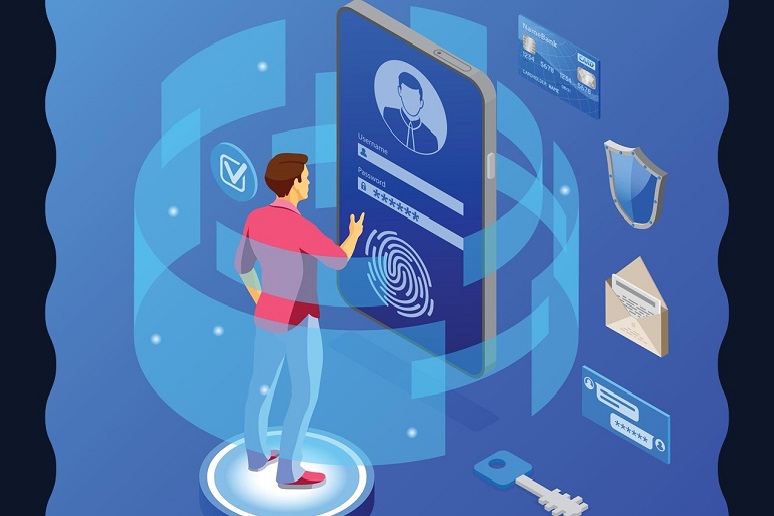Security solutions vendor Pindrop last month released its
2022 Voice Intelligent and Security Report. According to Pindrop's controlled study, 42% of customers are satisfied with the identification process required to access accounts via phone call with customer service, while 52% are satisfied with online access.
No Jitter recently interviewed Ben Cunningham, director of product marketing at Pindrop, about how fraudsters exploit the disconnect between call centers and customers. Cunningham also discusses how contact centers can improve the phone channel customer experience, how contact centers can protect themselves from data breaches that may damage the customer relationship, and what contact centers should do to repair and restore customer trust in the aftermath of a data breach.
Responses have been edited for conciseness and clarity.
Based on a national contact center case study conducted by Pindrop, 92% of fraudsters passed knowledge-based authentication (KBA) questions, while genuine customers only passed KBA’s 46%. Why is there such a big gap? How can contact centers flip this around so that customers are the ones passing KBA?
BC: A primary explanation as to why this gap is so big is the efficiency with which fraudsters are operating nowadays. Fraudsters have set up full-throated operations on the dark web, offering access to sensitive user information such as KBAs, bank logins, and more for anyone to access.
As for how contact centers can flip these success rates around, the answer lies in changing the authentication process altogether. Moving from these traditional authentication methods, like knowledge-based authentication (KBAs), to more advanced, secure processes, like voice authentication, call centers can easily authenticate genuine users and keep out the bad actors.
The report says satisfaction with the identification process is higher online than via phone call. How can contact centers improve the customer experience in the phone channel?
BC: Creating less friction between the customer and the contact center agent is crucial for improving customer experience. An effective way to do this is by improving the authentication experience from the moment someone calls into a contact center.
Contact centers that can effectively authenticate someone as a legitimate customer. Things like voice authentication and automatic number identification (ANI) can help contact centers easily divvy up real customers and potential bad actors, and route them to the proper channels more quickly and effectively than ever before. Changing the way that users authenticate themselves in the contact center can create a better experience, which is especially important now that consumers have increasingly higher expectations for how these types of interactions should play out.
How can contact centers protect themselves from data breaches that may damage the customer relationship?
BC: One area of vulnerability that is often overlooked is the interactive voice response (IVR). Threat actors can use the IVR system to verify their stolen information as well as extract the information they didn’t have before such as birthdays and PINs using auto-dialing algorithms or a simple guess and check method.
The second area is the agents themselves. Offering to speak with a person is a needed function for contact centers. However, humans are also susceptible to social engineering. Agents can benefit from advanced authentication technology relieving them from playing detective and avoiding the time vacuum of asking hundreds of ineffective “security” questions per day.
If there is a data breach, what are the things contact centers should do to repair and restore customer trust?
BC: Fortifying verification procedures can help detect bad actors trying to weaponize stolen data. Continuing the use of authentication that created the initial breach could signal to customers that the organization has not learned its lesson. Improving a contact center security posture no longer is synonymous with more work for the customer. Offering advanced authentication methods can show customers that the verification process can evolve in both experience and protection.
65% of enterprise company board members expect customer engagement/loyalty to improve as a result of increased investment in IT, technology, and digital business capabilities. How does investing in these areas increase customer engagement/loyalty?
BC: Technology investments can make everyone’s lives easier by digitally transforming businesses and automating processes. For instance, a business that invests in an authentication solution such as voice authentication can make life easier on the customer by reducing friction and, in turn, getting genuine users access to things they value the most, like bank account information and other sensitive assets.
Additionally, investing in technology that helps create more protected experiences for customers can also increase loyalty—when customers are confident that their assets are secure, they’ll have more peace of mind in doing business as usual with their current providers.
Blue Sky Time: What is one of the challenges you’re most excited to keep addressing at Pindrop? Why put your time and energy here?
BC: We’re excited about continuing to apply voice technology across several authentication areas. Going beyond knowledge and focusing on what someone has, like their voice, will help banks take a more proactive approach to protect customers and their bottom lines. Moving forward, advanced technology like voice authentication, AI, and machine learning can help curb attempted fraud and strengthen the vetting process for consumers and financial institutions alike.









